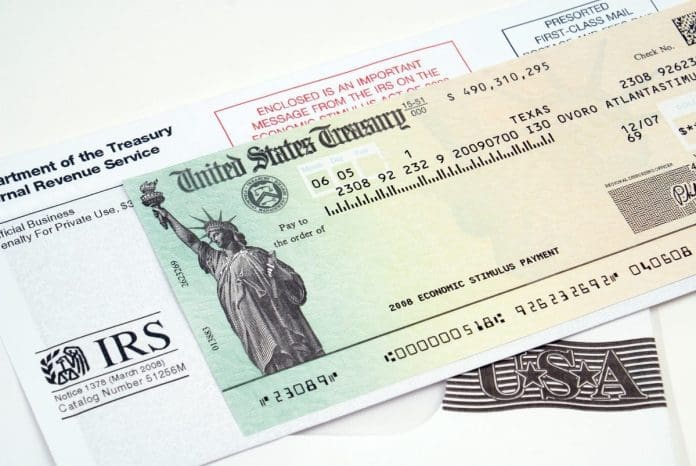California continues to send out stimulus checks under the Middle-Class Tax Rebate as states seek to alleviate the woes of residents as they remain heavily affected by rising prices. California was the latest state to join the list of states that are paying their residents in the absence of fresh federal measures.
It is already two weeks since the Golden State began sending out its third round of stimulus checks to cover the high cost of goods and services ranging from gasoline to groceries, utility bills, and home rent and mortgages. Governor Gavin Newsom used a part of the record state budget surplus of around $97 billion to support Californians.
Newsom included the predicted expenses in the $308 billion state budget. Even as the federal administration continues its battle to turn around the peak inflation rate, the prices of goods, especially gasoline, remain high, reaching the $7.3 a gallon mark in October in many places in the state.
Through the tax board of the state, the Franchise Tax Board, the state has issued direct inflation relief payments from October to January 14, 2023. The tax plan termed the Middle-Class Tax Rebate will provide residents with up to $1,050 and will depend on the adjusted gross income for 2020.
Individuals and families fight desperately to balance their budgets and cannot figure out why things have turned expensive so rapidly.
Stimulus Checks Take The Blame For The Spike In Inflation
Federal stimulus checks have been blamed for the rise in prices. The infusion of trillions of dollars over the past two years did affect the economy as it upset the demand and supply balance.
People who survived paycheck-to-paycheck suddenly had excess money in their hands. The successive stimulus check payments in the first quarter of 2021 which gave some families as much as $10,000 suddenly led to people having more money in their hands than they needed.
The pandemic also ensured that many service sectors including travel and tourism remained closed or only allowed restricted access. This led to people spending more on products and this led to a spike in demand.
The disruption in the worldwide supply chain did not help matters. Production across the world is dependent on a complex web of supplies to rein in cost. The sudden interruption across the world affected the production of complex manufacturing processes like the production of cars.
This disruption further affected supplies and contributed to the rise in prices.
A dominant factor in the overall rise in prices is the massive spurt in the price of gasoline. And there have been multiple factors that have contributed to its rise throughout the US. The war in Europe and the blockade imposed by the US and other NATO members have only served to aggravate matters.
The blockade has led to a shortage in the European and American markets and has led to a rise in gasoline prices, mainly in America. That has led to an all-around increase in prices and has affected every sector.
California Stimulus Checks To Bring Relief For Residents Affected By Record Gasoline Prices
Even as gas prices substantially fell across the country, the effect in California has been just the opposite. Prices here are pushing residents to the edge and the rising costs are raising concern about whether it is the result of price gouging.
Gas prices have dropped substantially in much of the US. but in California, the prices have remained much higher than in other states. The costs have troubled residents in the low and moderate-income range, with Californians paying roughly $2.61 more than the national average for gas.
The average there is as high as $7 in some parts of the state while it is $6.15 overall for the whole state.
For the first time, Californians are learning to save and avoid driving across town just to buy ice cream.
The California Stimulus Checks Keep Moving
To help residents cope with these costs, the Golden State has started to send out an inflation relief stimulus check that will reach 23 million residents. And Governor Gavin Newsom has called for a new windfall tax on oil and gas companies as they continue to make record profits.
California already has the highest gas tax of the other states. It has some environmental fees from a cap-and-trade program and low carbon fuel standards. Plus, it uses cleaner burning gasoline that costs more than normal gasoline to make.
But it only makes an 85-cent difference, the fact is that there are many other issues including production and refinery issues on the West Coast. This includes six refineries that are undergoing planned or unplanned maintenance.
This has severely affected gasoline supplies on the West Coast to drop and led to a skyrocket in wholesale gas prices.
This Friday Governor Gavin Newsom directed the California Air Resources Board to increase the supply of gasoline and lower the prices by permitting oil refiners to make the early switch to winter-blend gasoline. Under normal circumstances, most gas stations are not allowed to stop selling the more expensive but environmentally-friendly, summer blend fuel and switch to the cheaper winter-gasoline blend till November 1.
Following the move by Newsom, gasoline prices in the San Francisco area slid down 21 cents on Monday, but Los Angeles continues to report a rise of 8.31 cents a gallon.
But experts believe that the worse is over for the Golden State and that could end up having a positive effect on retail prices in a few days.
Stimulus Checks for low and moderate-income residents are going out at a rapid pace and the majority of direct transfers and debit card payments are expected to be complete.
Residents who received the Golden State stimulus check I or II will the payments in the first round through direct bank transfer. Online filers will receive their payment through direct transfers while the rest will receive it through debit cards.
Debit card Stimulus Check payments will be delayed by a few weeks though most payments are expected to be complete by November 2022. Only around 5% of the payments will be delayed and will be dispatched by January 14, 2023.
Debit card payments are expected to reach beneficiaries by two weeks from the date of dispatch.






